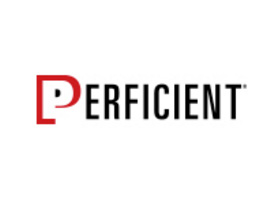A session parameter is a variable that IBM Cognos Framework Manager associates with a particular session. Examples include (current user name, current active language, current date and time, and others). Parameter maps are a method for substituting different values with different keys. A parameter map can be thought of as simple data “look-up table”. Each […]
Posts Tagged ‘Modeling’
Creating Business Logic – in Cognos Framework Manager
One of the goals of the Cognos Framework Manager modeler is to build a model that makes report authoring easier. To accomplish that, you “build in” business logic” (a loosely defined term here) into your meta model. This business logic can be simple (like simply renaming or hiding a database table column) or quite complex […]
Cognos Framework Manager, Transformer & Metric Designer
During a recent project of mine, I jumped “head first” into IBM Cognos Framework Manager. Yes, it is an awesome tool, but where exactly does it “fit” into the Cognos environment? Are there similar or alternate tools that can be used? I just had to have a quick look! The Cognos Components […]
IBM Cognos Framework Manager – Proven Practice
A proven practice for Framework Manager Meta Modeling is to divide your model into a series of layers, each layer having a specific purpose. (Originally IBM recommended the use of two layers (data and modeling), but later added a presentation layer, and (optionally) a separate dimensional layer). The layers should be: The top layer – […]
Flexible Meta Models and IBM Cognos Framework Manager
A metadata model is “a gathering of Meta information that includes both physical information and business information for one or more datasources and is the foundation for both future modelling and report development within an organization”. Meta-model flexibility can be defined as the ability of a (Meta) model to: Easily expand and grow (to support […]
Rapidly Adaptive Visualizations
I was “lucky” enough to be selected to “go on the road” this year as part of my organizations presence at the IBM business analytics summits, taking pace all over the country. If you haven’t attended one yet, you should as the content presented is both […]
Sequence Diagram in WMB
Using the WMB toolkit we can produce a sequence diagram with the following steps. Open Modeling Perspective 2. Within this Perspective Click on File->New->Other 3. Select Sequence Diagram within Modeling profile 4. Click Next and Select the location where the File needs to be created and Click Finish. A work area with the palette […]
Where and How to Learn Splunk
“Never become so much of an expert that you stop gaining expertise.” – Denis Waitley In all professions, and especially information services (IT), success and marketability depends upon an individual’s propensity for continued learning. With Splunk, there exist a number of options for increasing your knowledge and expertise. The following are just a few. We’ll […]
Cognos TM1 Performance Review – on a budget!
Often I am asked to conduct a “performance review” of implemented Cognos TM1 applications “rather quickly” when realistically; a detailed architectural review must be extensive and takes some time. Generally, if there is a limited amount of time, you can use the following suggestions as perhaps some appropriate areas to focus on (until such time […]
A Splunk Decision Support System
The importance of making credible decisions can be the difference between profit or loss, or even survival or extinction. Decision Support Systems (or DSSs) serve the key decision makers of an organization– helping them to effectively assess predictors (which can be rapidly changing and not easily specified in advance) and make the best decisions, reducing […]
Cognos TM1 TurboIntegrator – Run-time or Read-time?
In this blog I wanted to take some time to describe certain “behaviors” of Cognos TM1 TurboIntegrator processes. Access to Processes As of version 10.2 (or as of this writing), TM1 Server lists all processes (in alphabetical order) under the consolidation “Processes”. The visibility of processes can be controlled by implementing TM1 security. TM1 groups […]
Using Splunk with Cognos TM1
IBM Cognos TM1 offers powerful enterprise planning, forecasting, and analysis capabilities. These benefits are best realized by extending the solution across departments for a consolidated, integrated planning process, leveraging business-specific financial models that mirror business strategy. Our years of experience implementing TM1 have shown an increasing demand on support personnel to coordinate data transferring and […]
